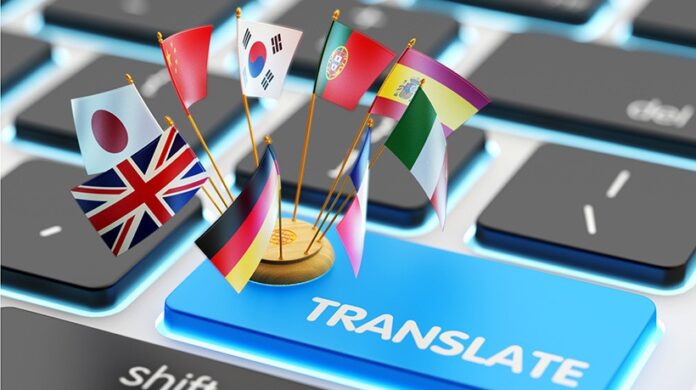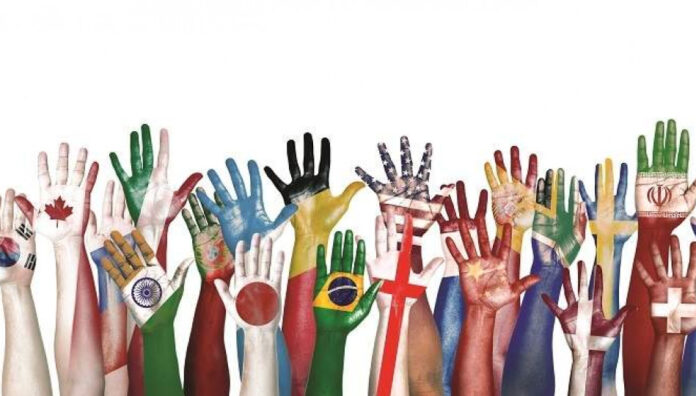
No matter the topic, subject, or who it’s catering to, a learning course needs to reach every single member of its audience in the same compelling way. If it’s a course that will be distributed globally to an international audience, it’s essential that the content is translated and tailored to a culture or nation’s suitable needs. No exceptions can be made if you want to create a high-quality course that truly makes an impact on everyone who pays their hard-earned money for it.
So, how do you ensure that the course delivers individualized learning to a global audience? Most importantly, how do you design a course that never excludes certain individuals?
Let’s discuss everything you need to know about producing a course that’s effective and serviceable on a global scale. Never let your content get lost in translation by following these ten important steps.
1. Use learning translation services

Firstly you should enlist the help of global translation services. Simply relying on automated translation will not cut it. Instead, trusted companies such as Global Lingo can provide you with reliable, consistent, and 100% accurate learning translation for your course content. There’s no substitute for high-quality translation. Your target audience deserves only the best content, no matter what language they speak.
2. Make use of visuals
Endless studies prove that visual cues improve comprehensive understanding, so make sure your learning course includes various types of imagery to aid learning, from graphs to graphics and charts to photographs. For example, a music diploma should have a lot of visual materials, as in this course on courses.com.au. Study results indicate that the mood and format of visual accompaniment does affect musical perception on acoustical and emotional dimensions. These findings are theoretically significant and provide valuable practical implications for fields such as education, marketing, and the music industry. Not only do visuals clarify your content, but they also help engage your audiences with the information they’re learning. Tip! – Make sure any graphic text is translated too!
3. Include captions and subtitles

Captions and subtitles are particularly useful if your course content includes a lot of audio narration. Any translation services you buy can help translate these subtitles too – so just make sure you include your video and audio content in your plan with them. Plus, captions are a great way of making your content more accessible to the hearing-impaired and those with learning difficulties.
4. Incorporate social media
A great way of creating a personalized support system for your audiences is to incorporate social media. Whether it’s online forums or sharing platforms, social media facilitates peer-to-peer information sharing and encourages collaboration. Course members may then be able to find other like-minded individuals who speak the same language. All members should be working towards a common goal, no matter where they are around the globe.
5. Consider cultural differences

Perhaps the most important thing you should do is consider worldwide cultural differences from nation to nation. What makes sense to one culture, might be confusing to another. What is offensive to one culture, might be perfectly acceptable to another. To avoid any misunderstandings or mishaps in your content, localize the content wherever necessary to ensure the content is suitable for a global audience. This is especially important when choosing to use any light-hearted humor!
6. Carry out demographic research
Conduct audience research to identify what you should be doing to provide a high-quality course for your global demographics. Everyone who enrolls in your online course should get the same experience, no matter where they’re from, so you should know as much about your target audience as possible. Find out what they expect from your course and what’s most important to them as learners. Try creating a few surveys or polls to identify what each learner needs from you.
7. Use an e-learning template

An online course massively differs from a direct face-to-face learning course, but e-learning can be just as effective! Use an e-learning template if you’re unsure of where to start and how to structure your content resources. There’s plenty of templates available that you can customize to match your own preferences. Take a look at what similar courses have already created and use them as inspiration for how you can make yours even better. Just ensure that the template you use accommodates easy and simple translation and localization processes.
8. Use appropriate images
We’ve already mentioned how you need to consider cultural differences – and this is especially important when using images. When deciding what visuals and graphics you want to use, be careful! Make sure all cultural norms are adhered to because you don’t want to use any images that will be deemed unacceptable. Plus, it’s also worth noting that certain colors and icons can signify different things across the world, so do your research!
9. Adapt your course to microlearning

Some people like to use microlearning repositories which give your learners a few shortened bite-size resources alongside the main bulk of your course. These mini-libraries of content can make your course more accessible and easily understandable. Translate and localize each resource to make sure it’s tailored to each global demographic. It’s a simple way of adding more ways of learning to your course.
10. Use pre-assessments
Using pre-assessments can allow you to understand what your members already know about your course subject. They can inform you of what level of teaching each member requires (beginner, intermediate, expert) and what certain topics or areas of expertise need to be covered more comprehensively. The more you know about each global region’s strengths and weaknesses the more information you have to tailor an individual course plan that meets their learning needs.
Are you looking to make your online course the best it can be for a global audience? Do you want to develop high-quality learning resources that do not exclude any nation or culture that signs up to your teaching? Then follow these ten important steps!
The key is to conduct thorough audience research before you start creating your content! There are fantastic translation services available that will translate every part of your content plan, so make sure your course content is up to scratch first. Design your course to be as visual as possible and create an open and inclusive community for your course members to interact with each other. Good luck!











